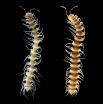This study examined the clinical specimens of 607 total cases of SCLC tumors (375) and lung NET (232), which included carcinoid, atypical carcinoid and large-cell neuroendocrine tumors. Biomarker testing was achieved through a combination of DNA sequencing (Next-Generation Sequencing (NGS) or Sanger-based); immunohistochemistry (IHC) to identify which proteins are present; and in situ hybridization (ISH) testing, a form of gene amplification, to determine if any of the markers that can cause cancer cells to grow or to become resistant to treatment are present.
Sequencing data were obtained from 201 total specimens (SCLC=115, NET=86). The 115 SCLC tumors harboured a wide spectrum of gene markers. Sequencing revealed mutations in p53 (57 percent), RB1 (11 percent), ATM, cMET (6 percent), PTEN (6 percent), BRAF (3 percent), SMAD4, KRAS (3 percent), ABL1, APB, CTNNB1, EGFR, FBXW7, FGFR2 (2 percent), HNF1A, HRAS, JAK3 (2 percent), MLH1 and PIK3CA (1 percent).
Multiple genes of interest were found in the NET group of 86 tumors, including 66 pulmonary neuroendocrine carcinomas and 20 carcinoid tumors. Among the neuroendocrine tumors, mutations were seen in p53 (44 percent), FGFR2 (9percent), ATM (9 percent), KRAS (6 percent) and PIK3CA (4 percent) as well as EGFR (2 percent) and BRAF (4 percent). Analysis of the carcinoid tumors revealed fewer markers, with notable mutations in p53 (11 percent), HRAS (11 percent), and BRAF (6 percent).
EGFR amplification was verified for 11 percent (5) of the 46 SCLC tumors tested. No SCLC tumors displayed amplification of cMET or HER2. The neuroendocrine tumors exhibited amplification of EGFR (13 percent), cMET (3 percent), and HER2 (4 percent) amplification, while the carcinoid tumors only showed amplification in EGFR (8 percent).
The overexpression of cKIT (64 percent vs. 37 percent), RRM1 (54 percent vs. 28 percent), TOP2A (91 percent vs. 48 percent), TOP01 (63 percent vs. 43 percent), and TS (46 percent vs. 25 percent) was found more frequently in SCLC tumors compared to lung NET, respectively (p=0.0001 for all). Low expression of PTEN was more often identified in SCLC tumors compared to lung NET (56 percent vs. 36 percent; p=0.001).
Molecular profiling of these lung cancer subtypes is not routinely performed, however, numerous mutations were found to be in common with non-small cell lung cancer tumors. Specifically, an EGFR mutation was noted in one small cell lung cancer specimen and one neuroendocrine specimen, an ALK rearrangement was detected in a neuroendocrine tumor, and HER2 amplification was seen in a neuroendocrine specimen.
"Even cancers that appear to be very similar can be dramatically different at the molecular level, and these differences may reflect unique vulnerabilities that could positively impact therapeutic options and decisions," said Stephen V. Liu, MD, senior study author and Assistant Professor of Medicine in the Division of Hematology/Oncology at Georgetown University's Lombardi Comprehensive Cancer Center in Washington, DC. "We are pleased that this research confirms these rarer subtypes; it calls for additional investigation on a larger scale. Once confirmed, molecular profiling of small cell tumors and NET could become standard, as it is currently for non-small cell lung cancers, which will be especially important as more molecularly targeted chemotherapy agents are developed."
INFORMATION:
The abstract, "Molecular Profiling in Small Cell Lung Cancer and Lung Neuroendocrine Tumors," will be presented in detail during a poster session at 5:00 p.m. Central time on Thursday, October 30, 2014. To speak with Dr. Liu, please call or email Michelle Kirkwood.
The 2014 Chicago Multidisciplinary Symposium in Thoracic Oncology will provide a clinically relevant, multidisciplinary update on the scientific progress in treating thoracic malignancies. The symposium brings together physician specialists and practicing clinicians of the multidisciplinary care team to discuss the evolving management of thoracic cancers. The Symposium integrates scientific abstract presentations with accompanying discussions, poster abstract presentations, as well as "challenging case" presentations in interactive tumor board-style forums. The two keynote speakers for the Symposium are Kenneth Rosenzwieg, MD, FASTRO, of Mount Sinai School of Medicine in New York, and Corey J. Langer, MD, of Abramson Cancer Center in Philadelphia. Dr. Rosenzwieg will discuss the use of mutational analysis to guide systemic therapy; and Dr. Langer will review the cutting edge, lung cancer research presented at recent national meetings – ASCO, ASTRO and STS (Society of Thoracic Surgeons).
2014 Multidisciplinary Symposium in Thoracic Oncology
News Briefing, Friday, October 31, 2014, 7:00 a.m. Central time
Oral Abstract Session: Thursday, October 30, 2014, 2:20 p.m. Central time, Grand Ballroom I-III, Chicago Marriott Downtown Magnificent Mile
12 Molecular Profiling in Small Cell Lung Cancer and Lung Neuroendocrine Tumors
Authors: R. Feldman1, I. Astsaturov2, S. Millis1, D. Subramaniam3, S. V. Liu4, 1Caris Life Sciences, Phoenix, AZ, 2Fox Chase Cancer Center, Philadelphia, PA, 3Georgetown University Lombardi Comprehensive Cancer Center, Washington D.C., DC, 4MedStar Georgetown University Hospital Lombardi Comprehensive Cancer Center, Washington D.C., DC
Purpose/Objective(s): Genomic profiling has become standard for specific subtypes of lung cancer and facilitates the use of targeted agents. The role of genomics in the management of lung neuroendocrine tumors (NET) and small cell lung cancer (SCLC) remains unclear, due in part to limited experience with these less common tumors. We describe molecular profiling results from a large cohort of lung NET and SCLC clinical specimens.
Materials/Methods: A total of 607 cases were included: 375 SCLC and 232 lung NET (which included carcinoid, atypical carcinoid and large-cell neuroendocrine tumors). A multiplatform approach of biomarker testing was used and included a combination of sequencing (NGS or Sanger), protein expression (IHC) and gene amplification (ISH).
Results: Sequencing data from lung NET (NGS, n=32; Sanger, n=68) identified genomic alterations in multiple genes of interest, including TP53 (34%), PTEN (9%), HRAS (7%), ATM, KRAS, FGFR2 (5-6%) and APC, EGFR, HNF1A, JAK3, KDR, MLH1, PIK3CA, RB1 (3%). Sequencing data in the SCLC samples (NGS, n=65; Sanger, n=100) revealed a wider spectrum of mutations, with variants detected in TP53 (57%), RB1 (11%), ATM, cMET, PTEN (6-7%), BRAF, SMAD4, KRAS (3-4%) and ABL1, APC, CTNNB1, EGFR, FBXW7, FGFR2, HNF1A, HRAS, JAK3, MLH1 and PIK3CA (1-2%). Amplification of EGFR was noted in SCLC (11%; 5/46), with no amplification seen in cMET or HER2. Lung NET displayed amplification in EGFR (12%, 14/104), cMET (6%, 3/50), and HER2 (3%, 2/64). No translocations were identified in SCLC, while ALK was detected in 1 lung NET sample (2%, 1/42). IHC revealed overexpression of cKIT, RRM1, TOP2A, TOPO1 and TS with more frequency in SCLC vs. all other lung NETs (64% vs. 37%; 54% vs. 28%; 91% vs. 48%; 63% vs. 43% and 46% vs. 25%; p=0.0001 for all comparisons) and low expression of PTEN was observed with more frequency in SCLC vs. all other lung NETs (56% vs. 36%; p=0.001).
Conclusions: Both SCLC and lung NETs comprise a genomically heterogeneous population of tumors and while there are no consistent findings, apart from p53 alterations, select driver mutations were identified within these histologic subtypes. Mutations in EGFR, BRAF, MET, FGFR2 may have important therapeutic implications and support comprehensive molecular analysis for a broader subset of patients.
Disclosures: R. Feldman: A. Employee; Caris Life Sciences. I. Astsaturov: G. Consultant; Caris Life Sciences. S. Millis: A. Employee; Caris Life Sciences. D. Subramaniam: None. S.V. Liu: G. Consultant; Perthera, Inc. (G). K. Advisory Board; Biodesix, Inc. (K).



